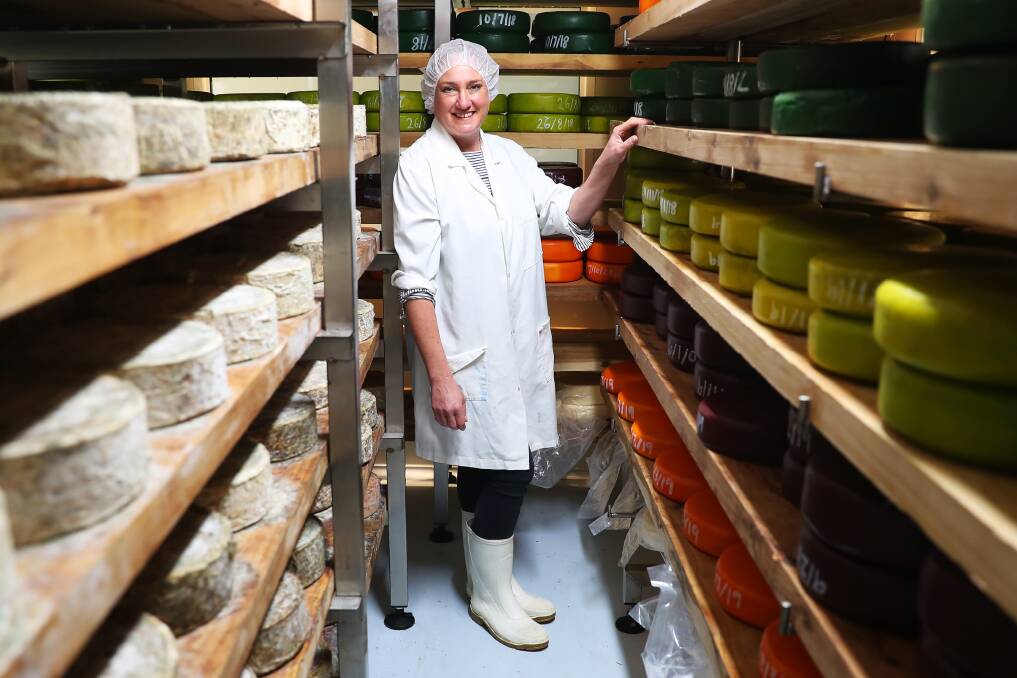Behind the Scenes with Cheese Makers Melbourne: Featuring Floridia Cheese
Behind the Scenes with Cheese Makers Melbourne: Featuring Floridia Cheese
Blog Article
Unlocking the Secrets of Artisanal Cheese Making: A Step-by-Step Do It Yourself Guide
In the realm of cooking craftsmanship, artisanal cheese making stands as a testimony to the delicate equilibrium between practice and development. Each action in the process, from picking the best milk to developing aging methods, holds within it a wealth of understanding passed down via generations. As we start this journey to debunk the art of creating splendid cheeses, we are confronted with a tapestry of skills and secrets waiting to be untangled. Join us as we explore the details of this ancient craft, where perseverance, art, and science assemble to create tastes that entice the senses.
Selecting the Right Milk
When beginning on the journey of artisanal cheese production, the option of milk plays a crucial duty in establishing the top quality and qualities of the last product. The kind of milk chosen influences the flavor, appearance, and generally profile of the cheese.
When picking milk for cheese making, it is very important to take into consideration the fat content. Greater fat material in milk can result in a creamier and richer cheese, while reduced fat content might cause a drier and firmer appearance. Furthermore, the source of the milk, whether from cows, goats, lamb, or buffalo, adds distinct tastes and characteristics to celebrity (Floridia Cheese Thomastown). Each kind of milk brings its own subtleties, allowing for a variety of cheese ranges to be crafted based upon the chosen milk. Eventually, the option of milk is an essential choice that establishes the foundation for a successful artisanal cheese-making undertaking.
Culturing and Coagulating
To launch the cheese-making procedure, the essential steps of culturing and coagulating need to be meticulously executed to transform milk into curds and whey. Culturing includes introducing helpful microorganisms to the milk, which then starts the fermentation procedure. These bacteria convert lactose (milk sugar) into lactic acid, creating the acidic atmosphere necessary for coagulation. The sort of culture used can dramatically impact the taste, texture, and ripening of the last cheese product.

The timing and temperature level control during culturing and coagulation are crucial aspects that influence the final result of celebrity. Appropriate implementation of these steps is necessary to guarantee the wanted texture, taste, and consistency of the artisanal cheese being generated.
Draining Pipes and Pressing Curds
After the milk healthy proteins have actually coagulated and the curds have been reduced to launch whey, the following vital action in artisanal cheese making involves draining pipes and pressing the curds to accomplish the desired texture and uniformity of the last cheese product. Draining is the procedure of dividing the curds from the whey. This can be done by transferring the curds right into a cheesecloth-lined colander or mold and mildew and enabling the whey to drain pipes off normally. The time for draining can vary depending upon the kind of cheese being made and the wanted moisture web content.
Pressing aids expel any staying whey and compacts the curds to develop a solid cheese wheel. Correct draining pipes and pressing are crucial actions that substantially impact the top quality and qualities of the artisanal cheese being produced.
Aging and Flavoring Methods
Executing precise aging and flavoring strategies is critical in boosting the depth and complexity of artisanal cheeses, elevating their taste accounts to beautiful levels of refinement and elegance. Aging plays an important function in developing the distinct tastes and appearances that distinguish artisanal cheeses.
Flavoring techniques also add dramatically to the last preference of artisanal cheeses. Cheesemakers may select to present additional tastes by including active ingredients such as herbs, flavors, and even fruits right into the cheese throughout the manufacturing process. Additionally, some cheeses are cleaned or massaged with different liquids, such as brine or alcohol, to boost their appearances and tastes.
Covering and Storing Cheeses

Final Thought
To conclude, grasping the art of artisanal cheese making involves carefully choosing the appropriate milk, complying with accurate culturing and coagulating procedures, draining pipes and pressing curds efficiently, and using different aging and flavoring methods. By complying with these actions carefully and with attention to information, you can develop your own delicious and one-of-a-kind cheeses at home. Keep in mind to cover and store your cheeses effectively to make sure optimum flavor and texture advancement. Satisfied cheese making!
Each type of milk brings its own subtleties, permitting for a wide array of cheese selections to be crafted based on the picked milk.After the milk proteins have actually coagulated and the curds have actually been cut to release whey, the following critical action in why not try this out artisanal cheese making includes draining Discover More pipes and pushing the curds to accomplish the preferred appearance and consistency of the last cheese product. A lot of cheeses need to be wrapped in wax paper or cheese paper to enable them to take a breath while shielding them from drying out. For cheeses that require to continue aging, such as bloomy peels or cleaned skins, check that guarantee they are stored in a great atmosphere like a cheese cave or a fridge established to the suitable temperature. By paying focus to the wrapping and storage space of artisanal cheeses, cheese makers and fanatics can preserve the stability of these specials and fully appreciate their complicated tastes.
Report this page